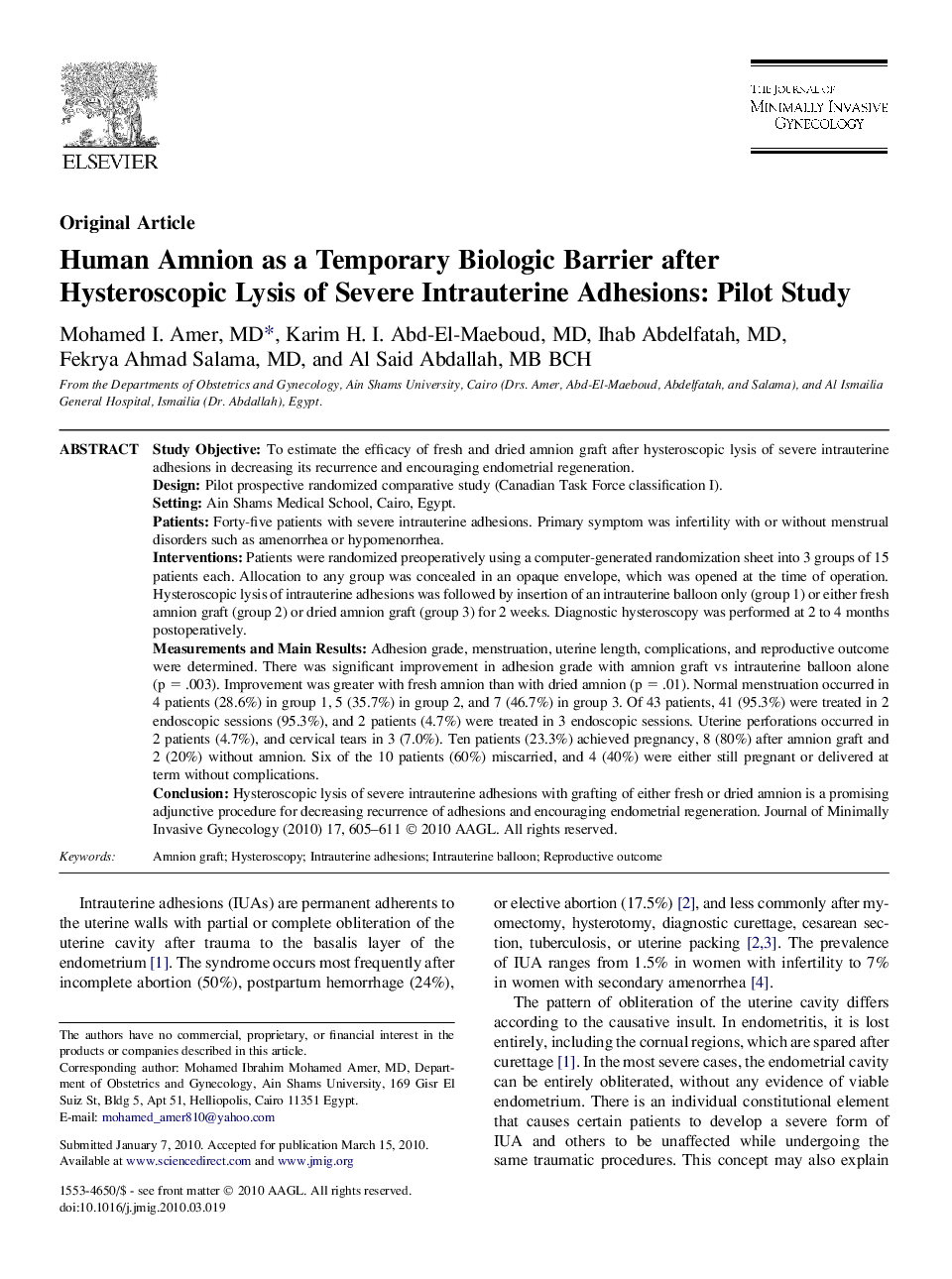| کد مقاله | کد نشریه | سال انتشار | مقاله انگلیسی | نسخه تمام متن |
|---|---|---|---|---|
| 3957637 | 1255381 | 2010 | 7 صفحه PDF | دانلود رایگان |

Study ObjectiveTo estimate the efficacy of fresh and dried amnion graft after hysteroscopic lysis of severe intrauterine adhesions in decreasing its recurrence and encouraging endometrial regeneration.DesignPilot prospective randomized comparative study (Canadian Task Force classification I).SettingAin Shams Medical School, Cairo, Egypt.PatientsForty-five patients with severe intrauterine adhesions. Primary symptom was infertility with or without menstrual disorders such as amenorrhea or hypomenorrhea.InterventionsPatients were randomized preoperatively using a computer-generated randomization sheet into 3 groups of 15 patients each. Allocation to any group was concealed in an opaque envelope, which was opened at the time of operation. Hysteroscopic lysis of intrauterine adhesions was followed by insertion of an intrauterine balloon only (group 1) or either fresh amnion graft (group 2) or dried amnion graft (group 3) for 2 weeks. Diagnostic hysteroscopy was performed at 2 to 4 months postoperatively.Measurements and Main ResultsAdhesion grade, menstruation, uterine length, complications, and reproductive outcome were determined. There was significant improvement in adhesion grade with amnion graft vs intrauterine balloon alone (p = .003). Improvement was greater with fresh amnion than with dried amnion (p = .01). Normal menstruation occurred in 4 patients (28.6%) in group 1, 5 (35.7%) in group 2, and 7 (46.7%) in group 3. Of 43 patients, 41 (95.3%) were treated in 2 endoscopic sessions (95.3%), and 2 patients (4.7%) were treated in 3 endoscopic sessions. Uterine perforations occurred in 2 patients (4.7%), and cervical tears in 3 (7.0%). Ten patients (23.3%) achieved pregnancy, 8 (80%) after amnion graft and 2 (20%) without amnion. Six of the 10 patients (60%) miscarried, and 4 (40%) were either still pregnant or delivered at term without complications.ConclusionHysteroscopic lysis of severe intrauterine adhesions with grafting of either fresh or dried amnion is a promising adjunctive procedure for decreasing recurrence of adhesions and encouraging endometrial regeneration.
Journal: Journal of Minimally Invasive Gynecology - Volume 17, Issue 5, September–October 2010, Pages 605–611